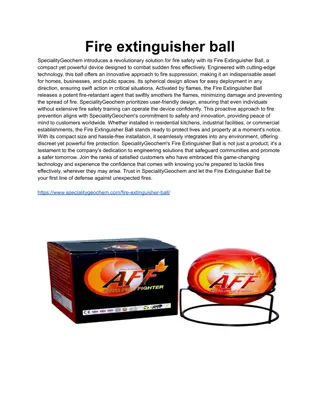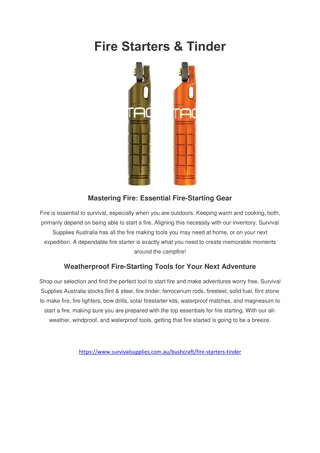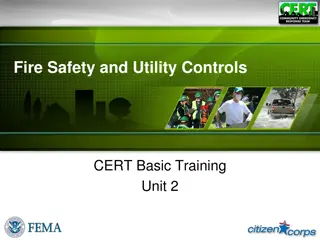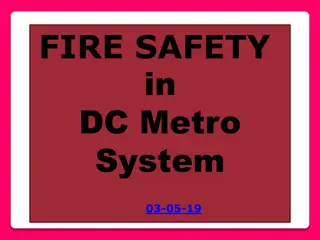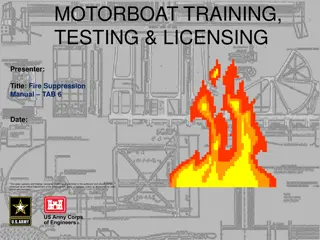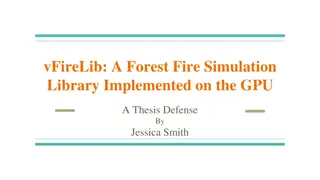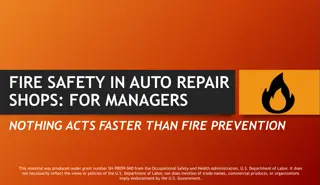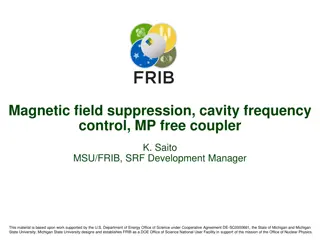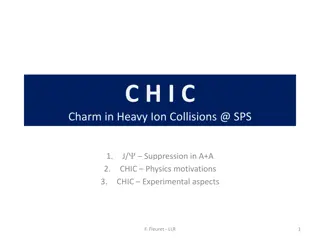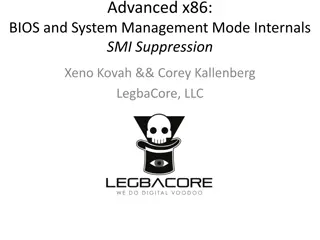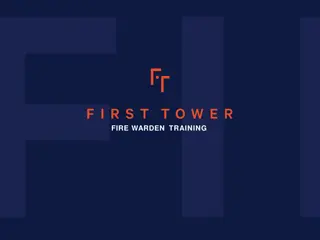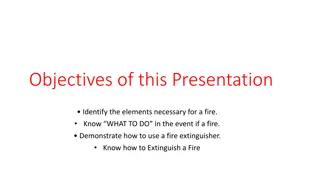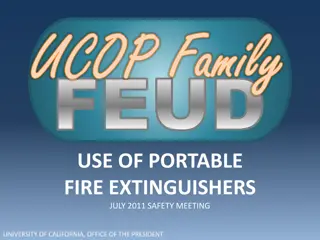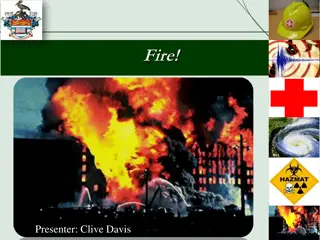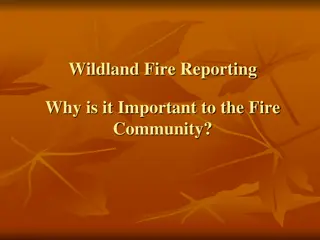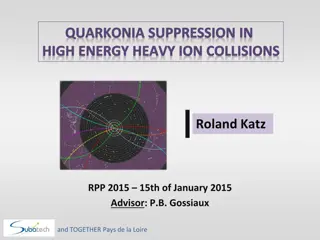Comparison of 2nd vs 3rd Generation Fire Suppression Systems
The comparison highlights the evolution from 1st generation dry chemical agents to advanced 3rd generation systems like the Piranha Hybrid System, ensuring better fire protection in restaurants. It discusses the drawbacks of 2nd generation systems, emphasizing the need for improved fire suppression technologies for commercial cooking areas, particularly deep-fat fryers.
Download Presentation

Please find below an Image/Link to download the presentation.
The content on the website is provided AS IS for your information and personal use only. It may not be sold, licensed, or shared on other websites without obtaining consent from the author.If you encounter any issues during the download, it is possible that the publisher has removed the file from their server.
You are allowed to download the files provided on this website for personal or commercial use, subject to the condition that they are used lawfully. All files are the property of their respective owners.
The content on the website is provided AS IS for your information and personal use only. It may not be sold, licensed, or shared on other websites without obtaining consent from the author.
E N D
Presentation Transcript
COMPARISON OF 2nd GENERATION V/S 3rd GENERATION FIRE SUPPRESSION SYSTEMS
1st & 2nd Generation Fire Suppression Systems First generation fire protection systems featured single dry chemical extinguishing agents. Second extinguishing protection for restaurants. - until 3rd Generation systems were introduced. generation agents, systems which featured represented single state-of-the-art wet chemical fire 3rd Generation System (Piranha Hybrid System). When actuated, the hybrid system discharges a fixed amount of proprietary wet chemical extinguishing agent immediately by a continuous discharge of water through the same pipe network and nozzles. followed automatically and
DRAWBACKS OF 2ND GENERATION FIRE SUPPRESSION SYSTEMS AND NEED FOR 3RD GENERATION SYSTEM (PIRANHA) Continued elevated temperatures can destroy a saponified foam blanket. If the temporary foam blanket breaks down from the heat before the grease cools below its reflash temperature, the grease will be re- exposed to air and will reflash. Although the foam blanket is excluding air from the grease, it is also an effective insulator that retards the release of stored heat from the top of the vat.
DRAWBACKS OF 2ND GENERATION FIRE SUPPRESSION SYSTEMS AND NEED FOR 3RD GENERATION SYSTEM (PIRANHA) UL Standard 300 Fire Testing of Fire Extinguishing Systems for Protection of Restaurant Cooking Areas fryer fire test protocol recognizes the above retarding effect by requiring that the grease cool for 20 minutes or 60 F (33 C)below the auto ignition temperature 366 C (whichever takes longer) without the fire reflashing. Since the grease surface area and the freeboard between the top of the vat and the surface of the grease limit the volume of the foam blanket, generating more foam by discharging additional wet chemical is usually ineffective.
DRAWBACKS OF 2ND GENERATION FIRE SUPPRESSION SYSTEMS AND NEED FOR 3RD GENERATION SYSTEM (PIRANHA) Therefore, the quality rather than the quantity of the temporary foam blanket becomes the more important factor. We may conclude that wet chemical agent alone must perform two crucial roles in suppressing fryer fires. First, it must rapidly extinguish the grease fire (a relatively easy task) Second, it must secure the hot grease until it cools below its minimum reflash temperature (a more difficult task).
EXAMPLE OF A FIRE PROTECTION CHALLENGE There is widespread agreement in the fire protection industry that the most difficult cooking appliance to protect is the commercial deep-fat fryer. There are four reasons to support this conclusion: 1. No other cooking appliance approaches the fuel loading of a commercial fryer which can hold up to 80 pounds (36.3 kg) of cooking grease. When the grease is accidentally overheated to an ignition point, the fryer stores an enormous amount of heat which must be released after flame extinguishment in order to secure the hot grease against reflash. 2. Compared to other appliances with large fuel surfaces, such as griddles, fryers have relatively small grease surface areas. This limits the amount of agent that can be discharged onto the burning fryer. It also results in smaller fire areas, which means longer pre-burn times and higher peak grease temperatures before the fire is detected and the system actuated.
THE FIRE PROTECTION CHALLENGE 3. Modern, energy-efficient fryers are designed to retain more heat to minimize fuel costs. This retards the release of heat from the hot grease in the event of a fire. 4. The trend from animal to vegetable cooking shortenings has raised auto- ignition temperatures resulting in higher peak temperatures before the fire protection system is actuated.
3RD GENERATION SYSTEM PIRANHA
3RD GENERATION SYSTEM- PIRANHA THE HYBRID CONCEPT In 1994, Ansul conducted a series of fryer fire suppression experiments using the UL300 test protocol to compare the fire suppression performance of its 1ST generation UL listed, single-agent wet chemical system against water discharged through a water sprinkler nozzle that was also UL listed for fryers fires. They observed that, under the same fire test protocol, water alone did not extinguish the grease fire until the hot grease was cooled below its fire point, typically 4 to 6 minutes after the start of discharge.
3RD GENERATION SYSTEM- PIRANHA When compared to the 4 to 6 second fire extinguishment time for the Ansul single wet chemical agent, the 4 to 6 minute delay was considered unacceptable since a fryer fire can spread to the hood and duct in that time frame. They also observed that, even though the flames continued to burn for several minutes under water discharge, the grease temperatures dropped at a much higher rate than when the grease was blanketed by insulating foam following a single-agent wet chemical
PIRANHA ADDRESSES DRAWBACKS OF 2ND GENERATION SYSTEMS
PIRANHA ADDRESSES DRAWBACKS OF 2ND GENERATION In a typical fire scenario with the fryer protected by a single-agent wet chemical system, a malfunctioning vat will heat the grease until it reaches the auto ignition temperature of 680 to 700 F (360-370 C) for new shortening. The overheating fryer will continue to heat the grease until the fire is detected and the fire protection system is actuated, at which time the wet chemical discharge begins and the fryer heat source is shut off by the fire protection system. During the pre burn period between auto ignition and system actuation, the burning grease may reach temperatures as high as 760 F (404 C) before the agent is discharged.
PIRANHA ADDRESSES DRAWBACKS OF 2ND GENERATION Upon discharge, the wet chemical will rapidly extinguish the flames (typically 4 to 6 seconds) and begin to cool down the hot grease while also reacting with the grease to form a temporary, air-excluding foam blanket on the surface of the grease. By the end of agent discharge, the hot grease will have cooled 40 to 60 F (22-33 C) below the peak (start of discharge) temperature and the vat above the grease will be full of foam. Although the grease may be close to the original auto ignition temperature at the end of discharge, tests have shown the critical re flash temperature may be as much as 60 F (33 C) below the auto ignition temperature.
PIRANHA ADDRESSES DRAWBACKS OF 2ND GENERATION
PIRANHA ADDRESSES DRAWBACKS OF 2ND GENERATION 1. PIRANHA system cools cooking oils 15 times faster than simple wet chemical kitchen fire suppression systems. 2. PRX makes the fuel (grease) temperature to drop below the re- flash temperature within two minutes. Conventional restaurant system takes 20 minutes to cool below the re-flash point. 3. The addition of water immediately after extinguishment activates the agent-fuel reaction, replenishing the foam blanket until the grease temperature has fallen below its re-flash temperature. 4. UL300 specifies that fires should be extinguished and that re-ignition should not occur, PIRANHA system achieves both fire suppression and prevention of re-igniting with maximum efficiency.
OTHER ADVANTAGES OF PIRANHA
OTHER REASONS FOR PREFERRING PIRANHA The primary advantage of the hybrid system over single-agent wet chemical systems is a significantly higher safety margin in the suppression of grease fires. The purpose of this technical paper was to explain the rationale that led to the development of the PIRANHA restaurant fire protection system and the codes and standards with which it complies. Fires involving modern cooling appliances are difficult to extinguish. Greater protection of hazard area from each nozzle. Averagely 60% less chemical is required per hazard. Means smaller and fewer agent storage tanks. PRX liquid fire suppressant provides a solution which incorporates water, safely and efficiently, in the extinguishment of restraint and commercial kitchen fires.
OTHER ADVANTAGES OF PIRANHA The PIRANHA system is the first totally new system designed to simplify design and installation and to reduce the agent tank sizes required. Easy compliance. The system has been fully tested to the requirement of UL300, and has been listed by UL300 in a new category of the hybrid concept: water Assisted wet chemical extinguishing systems. For each hood, duct and appliance test, the piranha system must: Completely extinguish the fire. Cause no splashing.



